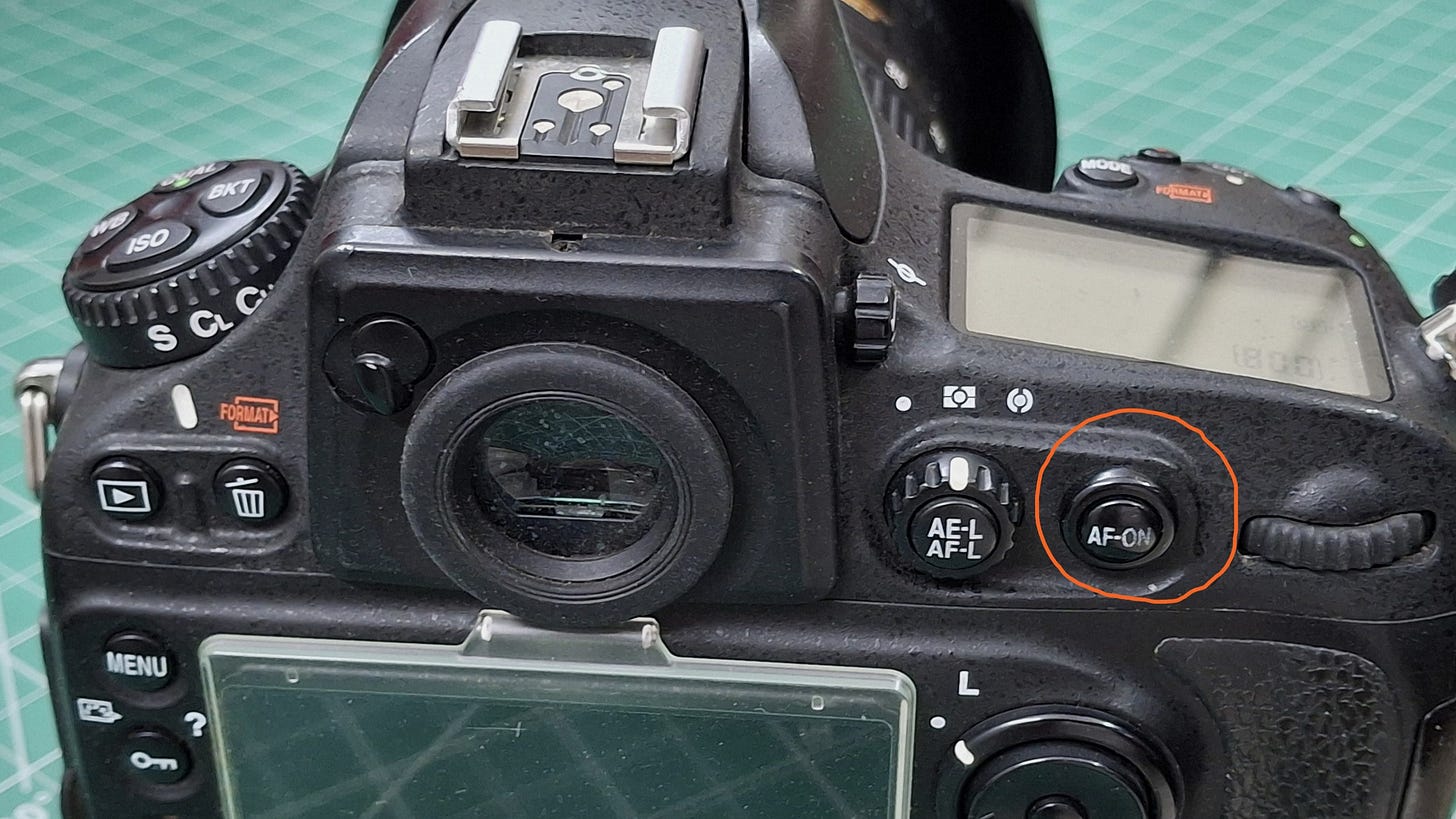What is Back-Button Focus and Why Should You Use It?
Unlock Sharper Images and Better Control Over Your Camera Focus
Have you ever missed a perfect photo because your camera’s autofocus shifted unexpectedly? Or perhaps you've struggled to quickly adjust focus while capturing fast-moving subjects? If so, Back-Button Focus (BBF) could revolutionize your photography workflow. It’s a simple yet powerful technique that professional photographers rely on to consistently achieve sharp, well-focused images.
In this comprehensive guide, we'll explore what back-button focus is, its key benefits, and how mastering it can drastically improve your photography—giving you greater precision, consistency, and control.
📸 What Exactly is Back-Button Focus (BBF)?
By default, most cameras combine autofocus activation with the shutter button. Half-pressing the shutter button typically triggers autofocus, and fully pressing it takes the photo.
Back-button focus separates these two functions:
Autofocus: Assigned to a dedicated button on the back of your camera (usually labeled "AF-ON" or customized through your camera’s settings).
Shutter Button: Only used to capture the photo, independent from focusing.
This simple adjustment offers photographers significantly more control over how and when their camera focuses.
🎯 Why Should You Use Back-Button Focus?
Using back-button focus offers several significant advantages:
1. Improved Focus Control
Precisely control when your camera autofocuses, independently from capturing the image.
Prevents accidental refocusing before pressing the shutter button, ensuring sharper images.
2. Easier Tracking of Moving Subjects
Continuously maintain focus on moving subjects by holding the dedicated AF button while freely capturing multiple shots.
Ideal for action, sports, wildlife, and event photography.
3. Seamless Switching Between Single and Continuous Focus
Easily switch between single-shot and continuous autofocus without changing camera settings, by simply pressing or releasing the back-button focus button.
4. Enhanced Efficiency and Speed
Quickly recompose without losing your focus point.
Saves time and reduces missed photo opportunities, especially in dynamic shooting situations.
5. Reduced Shutter Lag
Separating focus from the shutter button reduces shutter lag, allowing instantaneous capture without waiting for autofocus confirmation.
📐 How to Set Up Back-Button Focus
Setting up back-button focus is straightforward. Follow these general steps (varies slightly by camera):
✅ Step 1: Locate Back-Button Focus Settings
Go to your camera’s "Custom Controls" or "Button Assignments" menu.
✅ Step 2: Assign Autofocus to a Back Button
Set the dedicated AF-ON button or another customizable button at the back of your camera as your autofocus button.
✅ Step 3: Disable Shutter Button Autofocus
Ensure your shutter button no longer activates autofocus. It should only capture the image.
✅ Step 4: Test and Get Comfortable
Practice using your new back-button focus setup to quickly adjust and lock your focus.
🌟 Practical Examples: When to Use Back-Button Focus
Portrait Photography:
Use BBF to focus precisely on your subject’s eyes, then easily recompose without shifting your focus point.
Sports & Wildlife Photography:
Hold the back button continuously to maintain focus on fast-moving subjects, capturing sharp action sequences seamlessly.
Landscape & Street Photography:
Lock focus once using BBF, then take multiple shots without refocusing for consistent sharpness across images.
Macro Photography:
Use BBF to lock critical focus on intricate details, then fine-tune your composition without losing the precise focus.
🚨 Common Mistakes to Avoid with Back-Button Focus
Not Fully Committing:
Initially, BBF may feel unfamiliar—fully commit and give yourself practice time.Forgetting You’ve Assigned AF to a Separate Button:
Be patient during the adjustment period and consistently practice to establish muscle memory.Incorrect Camera Setup:
Double-check your camera’s settings to ensure the shutter button doesn't activate autofocus inadvertently.
📋 Quick Checklist for Mastering Back-Button Focus
Assign autofocus to your camera’s dedicated back button.
Disable shutter-button autofocus.
Regularly practice your new setup to build intuitive control.
Review images frequently for improved sharpness and consistency.
🌟 Final Thoughts: Unlock Professional-Level Precision
Mastering back-button focus is one of the simplest yet most impactful adjustments you can make to your photography technique. By clearly separating the focusing and image-capturing processes, you'll enjoy greater precision, sharper images, and dramatically improved consistency.
It might initially feel unusual, but with practice, back-button focus becomes second nature—vastly enhancing your photography workflow and resulting in more professional-quality photos.
🚀 Join My Photography Community!
Want to elevate your photography skills even further and produce consistently aesthetic, sharp, and professional-quality images?
Join my exclusive photography community, where you'll gain access to:
📚 Expert Tutorials: Comprehensive training on techniques like back-button focus, composition, lighting, and editing.
🎥 Live Interactive Workshops: Real-time sessions to apply your knowledge practically and receive personalized guidance.
🤝 Supportive Community Environment: Connect with fellow photographers, share your experiences, and grow together creatively.
👉 Subscribe today and discover the joy of photographic excellence!
Together, we'll achieve stunning images that reflect your vision and creativity.
Let’s create photographic brilliance together. 📸✨





